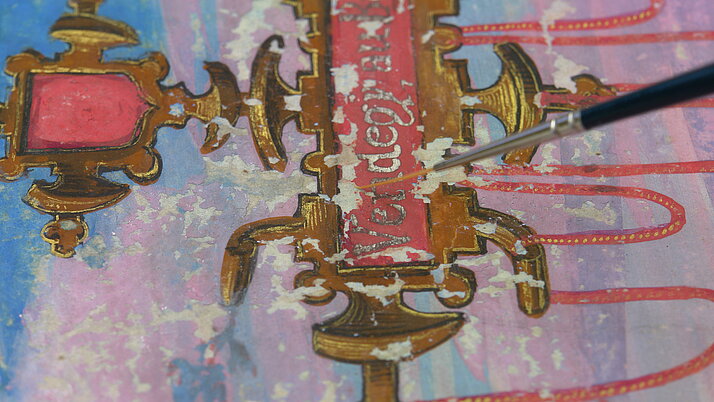Annual maintenance work will take place again this summer, which is why the reading rooms at the Heldenplatz location and in all collections will be closed from Friday, July 25, to Tuesday, August 5, 2025.
Due to the shutdown of the ordering system, no media orders can be accepted from Thursday, July 24, 2025, 4 p.m. to Tuesday, August 5, 2025, 4 p.m. The regular opening hours will then apply again from Wednesday, August 6, 2025.
The study room of the Albertina is closed from July 15 to August 15. During this time (except July 25 to August 5), media ordered from the Albertina collection will be transported twice a week (Monday and Thursday) to the reading rooms of the National Library on Heldenplatz and can be used there.
Starting August 1, 2025, the State Hall will open at 9 a.m.
Due to an event, the State Hall will be closed on August 4, 2025.
Securing pictures for the long term
Not only does the Austrian National Library collect books, but also hand drawings, printed images, maps, globes, posters, manuscripts and autographs. In contrast to a museum, these holdings should be accessible to as many people as possible as well, either in their original or in a digitalised format.
Preserve, not rejuvenate
Our aim with conservation is to maintain the historical condition and prevent further damage. We are not cosmetic surgeons; we want to enable the objects to age with dignity. The statements of the works should be recognisable and readable. We clean, for instance, heavy soiling that impairs the appearance. It is sometimes necessary to remove old mountings and lamination. We glue behind tears and touch up imperfections to prevent any part from going missing. We stabilise ink and colour layers to avoid losses. We remove substances such as sticky tape or adhesives that may lead to further damage. Pictures and drawings are mounted on cardboard or in passe-partouts.
We plan large preservation projects over the long term with the various departments. In case of exhibitions at the Austrian National Library and other museums, we prepare objects for presentation. Current examples of our work can be found in our blog contributions.
The Institute for Conservation ensures a good environment
The holdings are preserved in the best possible way by being stored in a stable environment with ageing-resistant materials (folders, passe-partouts, boxes). We do everything we can to create good conditions for as many works as possible. In case of special objects, we look for tailored storage systems such as for large-format maps or gouache on parchment.

